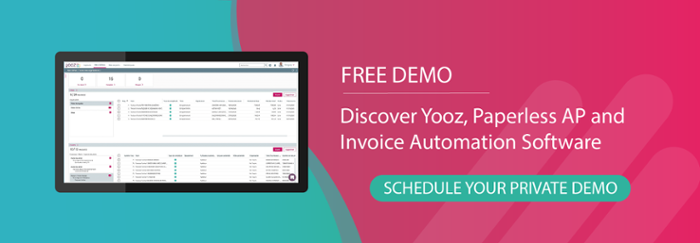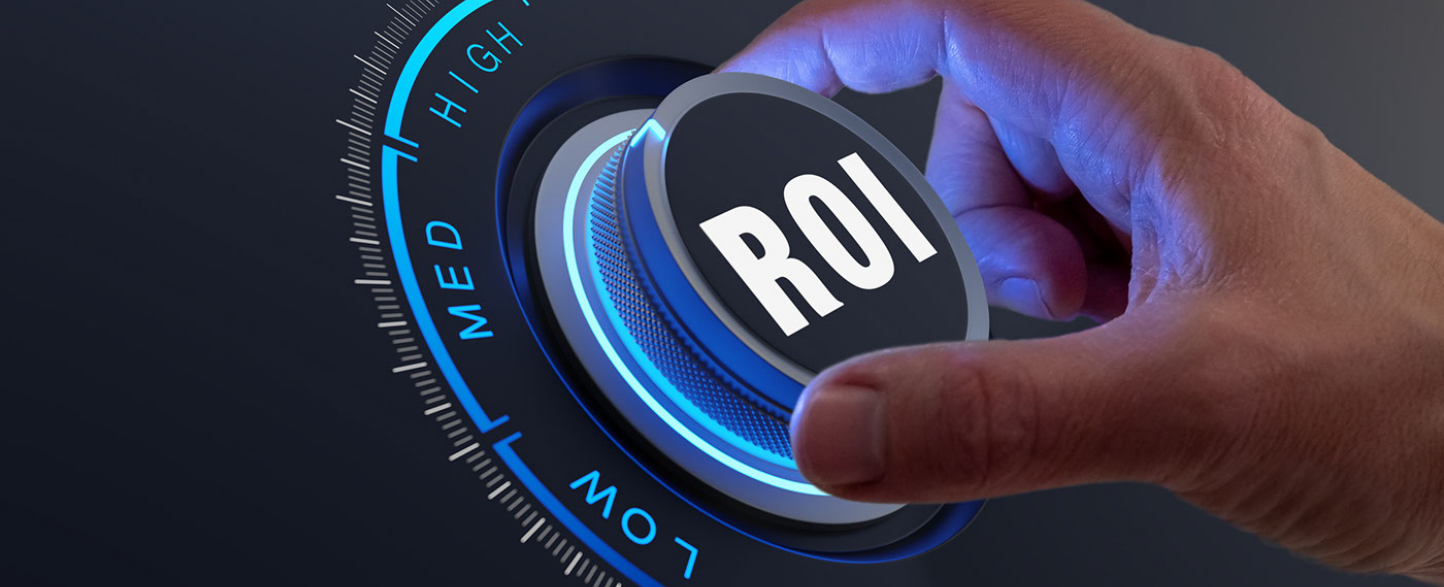After years of payments mysteriously disappearing or accumulating late fees from missing vendor's due dates, Accounts Payable departments are finally getting serious about figuring out how to improve their Accounts Payable process, creating a plan that will improve their accounting accuracy and efficiency. Most companies believe that their problems will be solved simply by quickly streamlining their process with an Accounts Payable (AP) automation solution and not worry about budgeting or evaluating the impacts on their goals.
However, outlining company goals, having a current budget, and effective cash management in both the present and past all affect how successful you'll be in increasing your AP efficiency and implementing invoice processing and payment automation. This isn't something that just happens; rather, your business needs to create a plan and adjust it on an ongoing basis. Let's explore why.
What goes into an Accounts Payable budget?
It goes without saying that to make the most out of your business's Accounts Payable budget, you need to understand the factors that blend to create this critical part of the purchase-to-pay process. But what are those factors?
- Capital asset budget - A budget that reflects the business' plans to invest in certain assets for an extended period of time.
- Cash collections schedule - The schedule that tells a company when it can expect to receive cash from a customer.
- Cash payments schedule - When a company will pay cash for direct material purchases according to an existing schedule.
- Cash budget - A budget estimating the company's inflows and outflows altogether.
- Budgeted balance sheet - Projection of what the company thinks its accounts receivable and payables - assets, liabilities, and equities - will be at the end of the year based on their targeted performance goals.
Cash collections schedules, cash payment schedules, and budgeted balance sheets are all pieces of the Accounts Payable budget and each matter when it comes to your business. In particular, capital asset budget and cash budget affect whether the expense is realistic to add to your firm's debt this quarter or if you will need to wait until next year. Let's look at these two in more detail.
Capital asset budget
Capital budget is the main budget you want to pay attention to when determining how AP automation will fit into your budget and into your company. That's because the capital budget evaluates whether a project will add value to the business long-term. Enterprises often consider their production performance as a project to invest in; that's where Accounts Payable automation fits in.
Once the firm decides to consider investing in Accounts Payable automation, the capital budget will help them determine if the purchase's current and future costs will be worth it. The capital asset budget is an ongoing evaluation because the firm has to use it for the entire or most of the quarter to get an accurate forecast of cost savings.
Cash budget
Cash budgeting provides a quick overview of how much cash your business currently has to spend. The cash budgets are prepared every month and will sort through a year to two years’ worth of expenses that you know will come up, or you plan to add. That way, you can avoid a cash shortage and pay your yearly debts without stress. The bottom line? Your cash budget gives you accurate information on how much money you can spend before you accidentally break the bank with any type of expense.
Once you have a clear idea of the individual aspects of your Accounts Payable budget, specifically the capital asset budget and the cash budget, you can look at how implementing smart technology to automate the entire invoice to payment process for your company will benefit your budget with goals that are specific, attainable, and timely.

Determining if AP automation will be beneficial using SMART goals
It should be noted that understanding which part of your accounts payable budget is only half the battle. Something else to consider is how your goals actually reflect the need for Accounts Payable automation software and if they will have a good (positive) impact. Your goals can include the inefficiencies in the production and the financial health of your company.
What exactly are SMART goals?
SMART goals give accounts payable departments a clear direction and understanding of the level of success they want to reach by a certain time period. Additionally, the goals are Specific, Measurable, Achievable, Relevant, and Timely hence the SMART acronym.
Before you formulate your Accounts Payable goals, you need to know the AP department's pain points and where the current invoice processing and payment workflow is lacking or succeeding. The most common pain points for businesses and employees for the invoice processing and payment workflow are:
- Too much paper (i.e., paper invoices).
- Data entry errors.
- Long cycle times.
- Losing documents during the Accounts Payable process.
- Complex systems that are one size fit all.
- Sending late payments and receiving late fees.
Now that you have an idea of possible pain points and budget, we're going to give you an example of a SMART goal. Our first example will be solving long cycle times. Only saying "long cycle times" is vague. To make this goal more specific, we would say "reduce long cycle times". This tells us about the area in our Accounts Payable process we're targeting and "reduce" makes it actionable.
Next, we need to make "reduce long cycle times" measurable and time bound. In this case, we're going to measure the progress using a percentage and specify the amount of time we need to achieve this goal. For example, "reduce long cycle times by 10% within the first 6-months of using invoice processing and payment automation for our Accounts Payable process".
We know that this is achievable because our objective is straightforward and with a defined completion date. It is also relevant to our Accounts Payable budget because we will reduce late fees and increase the Accounts Payable department's speed. For example, Yooz's state-of-the-art AP automation solution can reduce invoice cycle time up to 20% because its smart workflows make it easy for departments to share and receive documents and invoices with each other to get them instantly approved. Anytime. Anywhere.
Another example of goals of automating your invoice and payment process benefiting your budget could be in reducing the late payment fees incurred and even cashing in on early payment discounts from vendors. By reducing the cycle time from days to hours with an automation solution many customers can increase their on-time payment percentage for up to 90% of invoices being paid on time. With some vendors, this can qualify you to receive an early-payment discount. That means that not only would you be avoiding late fees but you could be saving the company additional costs and creating a new profit center.
The SMART goal for your company to have for this example could now be to “increase on-time payments to 90% of the time within the first 3 months of implementing Yooz AP automation software to the invoice and payment process.”
How to Make the Most of Your Accounts Payable Budget
Market researchers across the board agree that many companies haven’t fully grasped how much time and money they could save if they streamlined or intelligently automated their workflow.
An easy way to think about it is the 80/20 rule. This means your company can save 80 percent if you automate the Accounts Payable process, but only 20 percent of companies see it as a priority they should invest in. That sizable gap presents a clear opportunity to gain a competitive edge.
Case in point: Ardent Partners’ most recent report on “The State of ePayables 2021.” In the report the authors stress that the Accounts Payable function has a unique, strategic role to play because it ensures a company can continue to operate in turbulent times and, more importantly, let it boost its competitive fitness for the coming recovery. At the same time, according to Ardent the understanding of what intelligent AP automation can do for an organization as a whole is still lacking.
Fact it, making the Accounts Payable process touchless from purchase to payment requires an initial investment in a scalable and secure cloud solution, but allocating budget for it provides a host of immediate payoffs that can be summed up with one handy number: 80. That’s, on average, what a company can save when it drops manual processes and goes digital.
Here’s a closer look at why your organization should be among the 20 percent who lock in the 80 percent advantage of using AP automation:
- 99.5% accuracy in capturing invoice data with top automation tools resulting in a significant improvement in payment accuracy
- 26% higher profit with automation
- 80% reduction in AP processing costs
Let’s not forget that with automation and a solid Accounts Payable budget, AP specialists are suddenly free to pursue value-added tasks instead of being bogged down in manual processes and data entry. This frees up precious time to better engage with vendors and other partners.
5 ways Yooz benefits your company's Accounts Payable objectives and budget
1) Streamlines the Accounts Payable workflow
Yooz's all-in-one, powerful Accounts Payable solution leverages smart technologies like artificial intelligence and machine learning to create an accounts payable experience from purchase to payment. Everything can be done on Yooz's user-friendly and customizable platform while securing all of your data in the cloud. Your budget will be thankful because you don't have additional expenses from using separate software for each part of your workflow since our software does it all.
2) Saves cash
Leveraging Yooz's state-of-the-art Accounts Payable software means you'll reduce costs by 80%! The cash you were spending on unnecessary material expenses, like paper, is now removed. Now you're free to invest the excess cash you budgeted for on value-added projects in your company.
3) Cuts cycle time to hours
Wouldn't you prefer to invest your cash on actual projects that will bring in more income? When you use our system to reduce long cycle times, you save money since you're not spending all your cash paying late fees to unhappy vendors. Using Yooz to pay vendors on time will help qualify you for early payment discounts your vendor may offer. Not only will you have better vendor relations, but you can save or spend the extra cash for another project in your budget because you didn't have to pay full price.
4) Increased visibility
Having loose documents creates more work and messes up the Accounts Payable department's budget because the cash they thought had mysteriously disappeared. You can avoid this when reaping the benefits of Yooz's digital filing cabinet using an internet-like search to help you keep track of every invoice to report at the end of the year or quarter. Yooz also increases visibility into the cash management of your business as well. You won't have extreme differences in cash outflow and cash inflow on your balance sheet this way.
5) Digital transformation
The term and practice of digitally transforming your business are becoming increasingly popular and necessary year after year. Digital transformation keeps you competitive against the competition and saves you money in many ways. The first impact digital transformation has on your budget is completely removing paper from your process to reduce your material expense budget. Yooz makes that easy because we provide full automation within our cloud-based Accounts Payable automation system. Another way digital transformation impacts your Accounts Payable budget is the increased security. Many finance leaders don't realize how using paper leaves their company's financial information vulnerable to unwanted eyes. Yooz stores your data safely in the cloud and only allows authorized users to view and approve certain documents. To take things one step further, we have YoozFakeDetection to automatically detect forged documents and other fraudulent activities.
It is no wonder why finance departments have made automating purchase-to-pay invoice processing their top budget priority. But achieving the benefits of automation will remain out of reach for Accounts Payable departments that don’t take the right approach to plan, select, and implement a solution that will progress their financial and production objectives for the long-term.
Hopefully, this blog helps you better understand how you can make the most of your Accounts Payable budget through planning and implementing an Accounts Payable automation solution this quarter. Don’t wait any longer to automate your entire purchase-to-pay process today! Start by contacting one of our AP experts today for a free demo.







